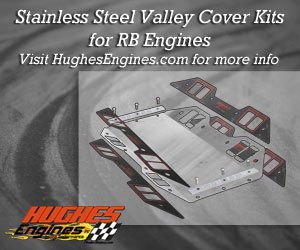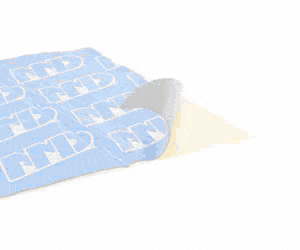
Correct tire and wheel fitment, when combined with the right stance, can make any car stand out in a crowd. The wrong tire and wheel fitment can also cause your vehicle to stand out, but not in a good way. Dialing in tire and wheel fitment is something that requires a little patience if you’re trying to stuff the largest possible combinations within your stock-bodied Mopar. And chances are likely that if you’re reading this, you want to put larger than stock rubber on your car.
The fact of the matter is that our glorious muscle cars came from the factory with pitifully small tires and wheels. Let’s take a moment to compare two supercars from the Mopar camp, a 1970 Plymouth Superbird and a 2017 Dodge Challenger Hellcat. The Superbird, in all its glory rolled on F70-14 bias ply tires, which equates to a 215/70R14 in modern P-metric radial sizing. Compare that to the Hellcat with 275/40R20 tires, and you have a difference of great magnitude. Actual dimensions vary by more than two inches in diameter, tread width and section width, and then the obvious difference in wheel diameter. With the availability of such a wide range of tires and wheels, settling for the original size seems like you might be leaving a little bit of real estate on the table. Even keeping with the tried-and-true 14- or 15-inch wheel design, your options are wide open.
Above left: Before we get started measuring the 1972 Dodge Dart, let’s take a second to measure a wheel to get an idea of what these numbers mean. Bolt pattern is a pretty is straight forward for Mopar muscle cars from the ‘60s and ‘70s—you two five-lug patterns defined as “small” (5×4-inch) or “large” (5×4-1/2-inch). Coker Tire and Wheel Vintiques offer authentic Mopar steel wheels in both the small and large patterns. Above right: Here’s a crucial measurement that can throw off your measurements. Advertised rim width is measured from the bead seat area and not from the outer most edge of the wheel. This Magnum 500 from Wheel Vintiques measures 8 inches from bead to bead.
Above left: It’s still important to know the overall width from the outer most edges. This number plays into your backspacing measurement. We’re showing 8-13/16 inches overall, but this can sometimes vary between aluminum wheels and steel wheels. Backspacing is measured from the mounting surface of the wheel to the outer most surface of the rim (not the bead seat). Above right: In the case of this Magnum 500 wheel, we’re working with 4-1/2 inches of backspacing. Simple math would’ve told us that a 15×8-inch wheel with 4-1/2 inches of backspacing would’ve had 3-1/2 inches on the front side. However, when we add the extra bit of material on the outer edges, we have a total of 4-5/16 inches on the front side of the wheel mounting surface.
We spoke with the tire experts at Coker Tire Company, and the steel wheel experts at Wheel Vintiques to get the scoop on proper tire and wheel fitment for your Mopar. Both companies offer exact O.E. reproductions of tires and wheels for muscle cars, as well as modern renditions of those classic designs. It’s common for Coker or Wheel Vintiques to be faced with the ultimate question of “will it fit?”. And in most cases, the customer service reps are not authorized to provide definite answers because every car is different. When it comes to a car with stock suspension and stock brakes, these applications are a little more predictable. Aftermarket parts often throw off tire and wheel fitment, and of course variables like rear end width and ride height affect tire and wheel fitment. The most sound advice that the reps can give the customers is to measure your car carefully and call back when you’ve done your homework.
We’ve found that the most accurate way to measure for tire and wheel fitment is with a straight edge and a tape measure. You can buy specialized devices that help determine tire and wheel sizing, but making notes of your simple measurements will help you determine the maximum size for your application. We’ll show you how to do it in this guide to measuring for larger tires and wheels. When you have your numbers in front of you, it is time to find a tire size chart online or grab your trusty Coker Tire catalog to find the overall diameter, section width and tread width of the tires you have in mind. Our general rule of thumb for a car with 14- or 15-inch wheels is to stagger the overall tire diameter by at least one inch to provide that aggressive stance.
Above left: Our subject is a 1972 Dodge Dart, which features a RMS K-member with tubular control arms and coilovers. This is obviously a little different from the standard torsion bar setup that rides beneath many Mopar muscle cars. It’s important to note that track width may be altered by disc brake conversion kits or aftermarket suspension components. It is also crucial to have the vehicle sitting at ride height to get the most accurate measurements. Above right: We went with the old school method of a straight edge and a tape measure to get our baseline measurements. Devices are available to help with this process, but this is the cheapest and easiest way to do the job. We took note of every measurement and our first one is from the wheel mounting flange to the inner most point on the front fender. We came up with 5-inches, gaining about a half-inch of clearance by “rolling” the fender lips.
Above left: Just about any Mopar muscle car is going to have shock towers, unless you’ve gone full road race and replaced them with flat panels. Even though our subject has an aftermarket suspension setup that no longer uses the upper shock mount, we still need to work around the original shape of the inner fender. Now, we will measure from the wheel mounting flange to the inner fender. We’re coming up with 8-1/2 inches on this application. Always try to consider ride height, suspension compression and camber angle when making these measurements. Above right: Now, it’s time to turn the wheels and try our best to avoid the dreaded parking lot tire rub. We turn the wheel fully to the right and estimate where the top of our tire and wheel combination will be located. Then, we measure from the wheel mounting surface to the fender lip.
As for oversized wheels, you’re aiming for a different set of measurements and the most important one is the backspacing of the wheel. This is crucial to proper fitment, and this is the part of your homework where an 1/8-inch miscue can cause a world of trouble. That’s why it’s important to measure all four corners, because our beloved old cars aren’t always perfectly square. If you’re going for the maximum wheel width for your application, it is sometime necessary to have your wheels built with custom backspacing. While Coker Tire does not offer custom backspacing on its Mopar wheels, the folks at Wheel Vintiques are glad to provide a stock appearing Mopar wheel in a variety of sizes and backspacing configurations.
Most Mopar muscle cars can use off-the-shelf wheels with standard backspacing, but different variables can cause fitment concerns. There are several factors that hinder tire and wheel fitment, but don’t let that keep you from dialing in your combination. Take a look at how we measured this 1972 Dodge Dart Swinger, and use the same techniques on your build to make the most of your modified Mopar.
Above left: Now, we can turn the wheels to the left and take a similar measurement. This time, we are placing the straight edge on the leading edge of the mounting flange. Caster adjustments affect how far the tire tips in or tips out in harsh cornering, so be sure to have your suspension aligned before measurements are taken. Given our measurements, we can safely run an 9-inch wide front wheel with up to 6 inches of backspacing. Above center: Out back, the Dart features an 8-3/4 rear end with Wilwood disc brakes. This car has been mini-tubbed, giving us a little more breathing room and a lot of latitude for tire and wheel fitment. Above right: Measuring the rear is pretty straightforward. We start by measuring from the flange to the lip on the quarter panel. We like to allow 1/2-inch for flex, and our measurement shows 4 inches from flange to lip. Take note of the 3/4-inch spacers in place on the Dart, and always use longer wheel studs if your application requires wheel spacers for the proper fitment.
Above left: From the flange to the wheel tub, we measure 9 inches, which gives us a lot of wiggle room. Ideally, you want to allow one inch on each side of the rim for sidewall bulge, especially if you are using moderately sized wheels and 70-series or taller tires. Low profile tires on large diameter where do not require so much sidewall allowance, but you still need to allow for suspension flex. Above right: Finally, we take an overall measurement of the wheel tub, so that you can calculate the desired tire’s section width. This car has a whopping 14 inches of width, meaning we can safely run a tire with 12 inches of section width. Given our measurements, we can very easily run a 10-inch wide wheel, with up to 7 inches of backspacing. If you’re looking for the classic muscle car style, but want custom sizing or backspacing, Wheel Vintiques offers authentic Mopar steel wheels in a variety of configurations.
Coker Tire Company • 1-800-251-6336 • www.cokertire.com/Wheel Vintiques • 1-800-959-2100 • www.wheelvintiques.com





















really great information…..
thanks…
usable information
Awesome!!!!!!
Hi can anybody tell me how wide a 67-76 dart is from outer wheel well to outer wheel well. I’m in the process of trying to figure out narrowing measurements. For my wheels & 1.33 inch shorter axles. Help will be greatly appreciated
Go to http://www.abodiesonly.com! They’ll be able to answer ALL the questions you have!
thanks for this post…